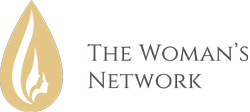Contents
It is important to compare investment options that have a similar risk. Comparing a Treasury bill, which is virtually risk free, to investment in a highly volatile stock can cause a misleading calculation. Both options may have expected returns of 5%, but the U.S. government backs the RoR of the T-bill, while there is no such guarantee in the stock market. While the opportunity cost of either option is 0%, the T-bill is the safer bet when you consider the relative risk of each investment.


You make an informed decision by estimating the losses for each decision. Return on investment is a performance measure used to evaluate the efficiency of an investment or compare the efficiency of several investments. Pete Rathburn is a copy editor and fact-checker with expertise in economics and personal finance and over twenty years of experience in the classroom. There’s also the opportunity cost of doing all your own bike maintenance. There is an opportunity cost to one concern taking precedence over another. On the flip side, there’s an opportunity cost to using the new Marriott cards for food, as many other cards in different points programs offer big bonuses in these same categories.
Why Is PPF Important To An Economy?
Explicit and implicit costs can be viewed as out-of-pocket costs and costs of using assets you own . Your opportunity cost is what you could have done with that $30 had you not decided to add the new item to the menu. You could have given that $30 to charity, spent it on clothes for yourself, or placed it in your retirement fund and let it earn interest for you. Consider, for example, the choice between whether to sell stock shares now or hold onto them to sell later.

_____ cryptocurrency security standard security costs are direct monetary costs that are lost when making a decision. Thinking about some opportunity cost examples we already went through, this makes sense. The opportunity cost is the value you lose based on the decision you make.
They represent the income or other benefits that could possibly have been generated had you made the alternative choice. The concept of opportunity cost can be applied to most of life’s decisions. And that’s not even considering inflation, or the steady loss in purchasing power cash falls victim to over time. If you choose to stay in cash long term, not only are you missing out on the opportunity to grow that money in the stock market, but your dollars are also losing value by around 2% each year. Johnson points to historical data on stocks versus bonds to illustrate the missed financial opportunities.
Economists include both implicit costs and the regular costs of doing business when calculating total economic profit. In other words, economic profit is the revenue a company generates minus the cost of doing business and any opportunity costs. Calculating an opportunity cost is as simple as comparing the expected returns of each alternative. Imagine that you have option A, which is to invest in the stock market to earn capital gains. Alternatively, you can reinvest your money back into your business. When you do this, you may anticipate that newer equipment increases production efficiencies.
A land surveyor determines that the land can be sold at a price of $40 billion. A consultant determines that extracting the oil will generate an operating revenue of $80 billion in present value terms if the firm is willing to invest $30 billion today. With purchased tickets, airlines can at least claim an “opportunity cost,” but changing a frequent-flier award costs an airline virtually nothing. The opportunity cost of studying at university for three years is the three years of pay that you do not earn during that time. Cost Volume Profit AnalysisCost Volume Profit Analysis is a way to understand the relationship between cost & sales and profit. It determines the effect of change in cost and sales on the profit of the company.
From 1926 to 2020, large capitalization stocks, like those in the S&P 500, have seen average annual returns of 10.2%. Long-term government bonds averaged 5.5% annually whereas Treasury Bills returned 3.3% each year on average. When a nation, organisation or individual can produce a product or service at a relatively lower opportunity cost compared to its competitors, it is said to have a comparative advantage.
Explicit Opportunity cost
For example, a company could earn income from renting out its building versus the revenue earned from using the building for manufacturing and selling its products. The opportunity cost of capital is the incremental return on investment that a business foregoes when it elects to use funds for an internal project, rather than investing cash in a marketable security. The opportunity cost of capital is the difference between the returns on the two projects. A company may choose to include implicit costs as the cost of doing business since they represent possible sources of income.
Explicit costs are the direct costs of an action , executed either through a cash transaction or a physical transfer of resources. In other words, explicit opportunity costs are the out-of-pocket costs of a firm, that are easily identifiable. This means explicit costs will always have a dollar value and involve a transfer of money, e.g. paying employees. With this said, these particular costs can easily be identified under the expenses of a firm’s income statement and balance sheet to represent all the cash outflows of a firm.
How Does Opportunity Cost Work?
For example, consider a company that decides to invest in government bonds instead of buying new capital equipment to increase its production capacity. So, the opportunity cost is negative if the return on the foregone option is greater than the chosen option’s. The opportunity cost is positive if the return on the foregone option is less than on the chosen option. Opportunity cost is an analytical strategy whereby a person or a company can evaluate the potential benefits of applying a certain investment strategy. Opportunity cost is the potential benefit a company or investor buyer may have gotten had they chosen this opportunity over others.
The opportunity cost of choosing the equipment over the stock market is 2% (12% – 10%). In other words, by investing in the business, the company would forgo the opportunity to earn a higher return. You’ll incur the wrong opportunity costs when you choose the wrong investment option. You can mitigate the uncertainty of returns by constructing your portfolio strategically and determining the percentage to comfortably allocate to each asset. Time spent chasing after an income might have health problems like in presenteeism where instead of taking a sick day one avoids it for a salary or to be seen as being active. A production possibility frontier shows the maximum combination of factors that can be produced.
- Thinking about some opportunity cost examples we already went through, this makes sense.
- You might not understand the whole premise, but practically every decision will involve some trade-off.
- We can also use the PPC model to illustrate the economic growth represented by the PPC shift.
- _____ opportunity costs are direct monetary costs that are lost when making a decision.
In this scenario, the opportunity costs of producing the two goods are projected to be equal regardless of where you are along the line. In reality, this scenario is unusual, and the PPF is more often displayed as a curve that curves outward. A production possibilities curve is a graphical representation of the alternative combinations of goods and services that an economy can produce. In drawing the production possibilities curve, we will assume that the economy can produce only two goods and that the number of factors of production and technologies available to the economy are fixed. The PPC form also gives us information about the technology of production . The curved shape of the PPC in Figure 111 indicates rising opportunity costs of production.
Thus, while 1,000 shares in company A eventually might sell for $12 a share, netting a profit of $2,000, company B increased in value from $10 a share to $15 during the same period. Assume that, given $20,000 of available funds, a business must choose between investing funds in securities or using it to purchase new machinery. No matter which option the business chooses, the potential profit that it gives up by not investing in the other option is the opportunity cost. They often make expensive impulse purchases because they don’t know how to handle money. Some of their financial decisions are not viewed or considered as opportunity costs. However, you can only consider opportunity costs when deciding between two risk profiles.
This means that real variables such as the production costs of producing goods, the market value of specific consumer goods, and the United States’ international trade in capital goods and trade gains. Opportunity costs are representative of what could be gained by using those resources in a different way, and how that use compares with the benefits ultimately generated by the chosen option. Increasing opportunity cost is important in business and economics because it describes the danger of a complete shift into non-production. The law of increasing opportunity cost states that whenever the same resource allocation decision is made, the opportunity cost will increase.
Opportunity Cost Calculator
The https://coinbreakingnews.info/ opportunity cost is an economic principle that describes how each time a resource is allocated, there is an underlying cost of using them for one purpose over another. Avoiding opportunity costs throughout the prioritization process of product roadmap software might result in inefficient decision-making. Opportunity cost is the value of something when a certain course of action is chosen. The benefit or value that was given up can refer to decisions in your personal life, in an organization, in the country or the economy, or in the environment, or on the governmental level.

